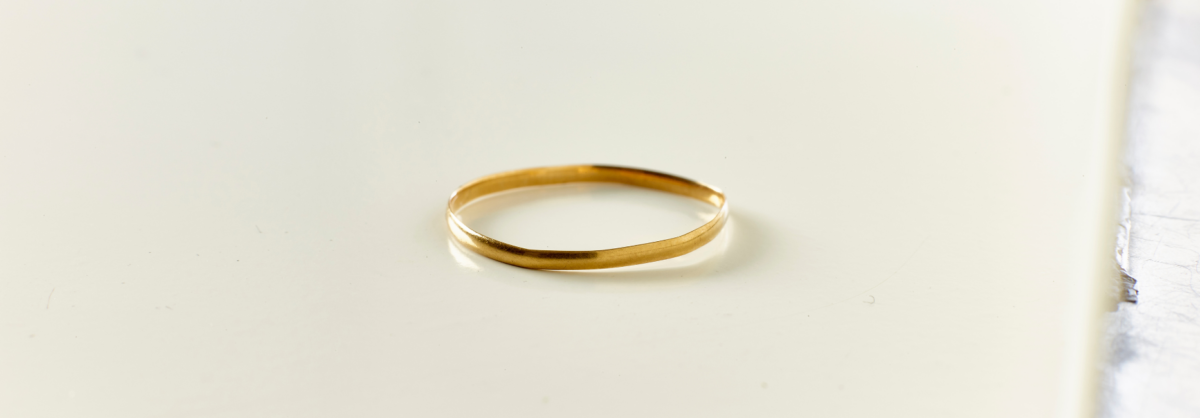What are they?
Hand painted miniatures
Oval hand painted miniatures of Elizabeth Bayley and William Seton, attributed to Francis Rabineau, a well-known miniature portrait artist. The miniatures are encircled by a rim of solid gold. Behind Elizabeth’s under a thick crystal resting on a blue and gold enamel background, is a lock of her husband’s hair held together by a small clasp of pearls surrounded by a braided lock of her own hair. Behind William’s is embroidered fabric with a letter M most assuredly for his middle name of Magee.
The miniatures were received from the estate of Ferdinand Jevons, great-grandson of Elizabeth Ann Seton, ca. 1969.
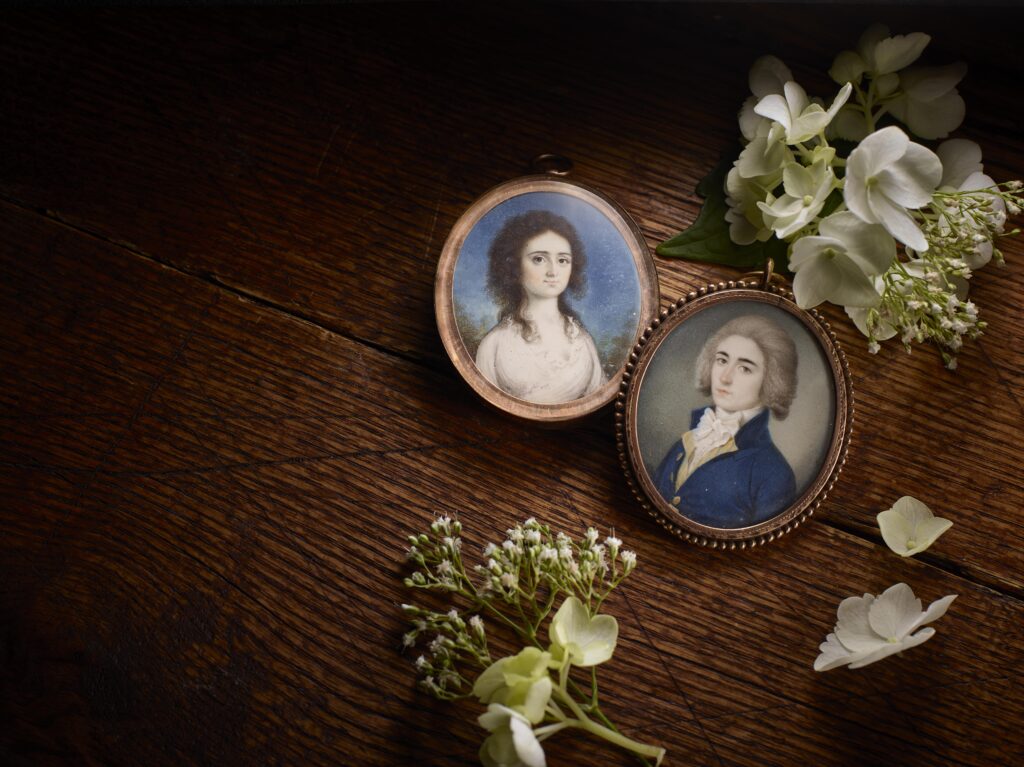
Wedding ring
This yellow gold wedding band ring was given to Elizabeth’s daughter Catherine, and it is thought that she wore it until her death. It was then returned to the Daughters of Charity.
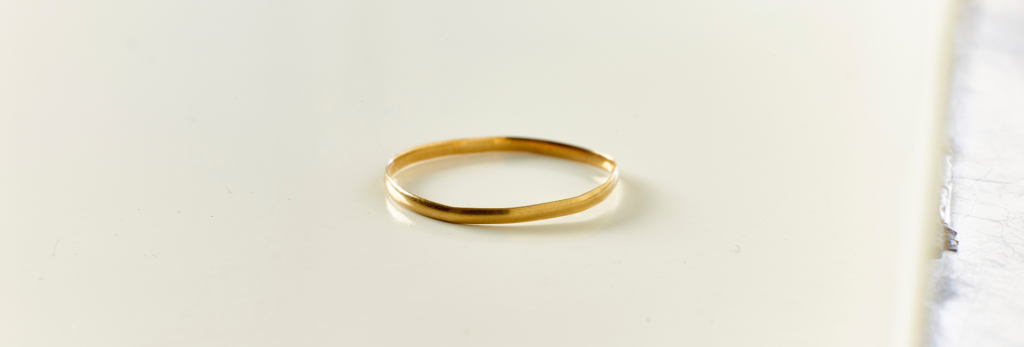
The marriage:
There is no record of how William and Elizabeth met, though they did seem to have a few friends in common. William’s family were successful merchants, and he was very popular in New York society. William and Elizabeth were married on Jan. 25, 1794. They were deeply in love and reveled in each other’s company, sharing many interests such as love of the arts. The first half of the marriage was a time of bliss for both William and Elizabeth. Unfortunately, the second half was marred by financial distress and ultimately, William’s death from tuberculosis while on a trip to Italy to try and save William’s business. It was during that trip that the seeds of Elizabeth’s conversion were planted.
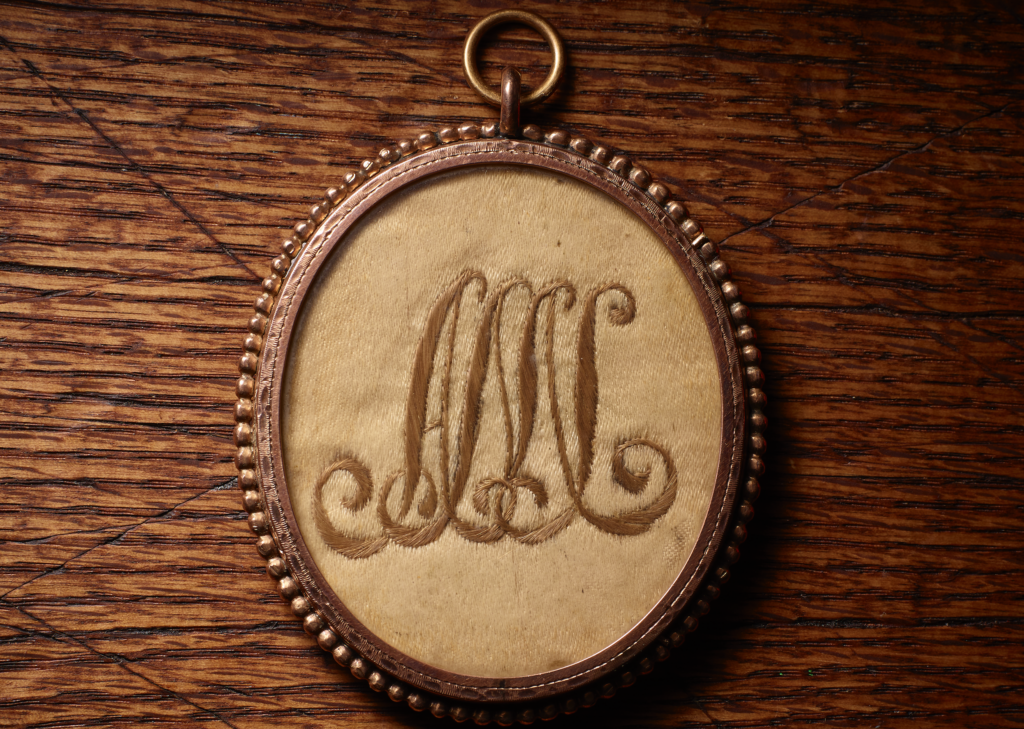
William Seton: The early years
Joseph Dirvin writes that William Magee Seton was handsome, charming, mature with first-hand knowledge of the great mysterious world across the waters. He was of the first circle of New York society and a man of wealth. More important, he was also good humored, kind, tender, and alive with the energy zest of youth. He liked to have a good time, as can be judged from his stay in London and from the fact that he was foremost among the socialites of New York.
While in Italy he was a frequent opera goer and was often seen at balls and concerts and all in all made an impact on the social life of Pisa and Florence. He was himself a passable violinist, there is even reason to believe that he once toyed with the thought of making a career of music. However, he had his feet firmly planted on the ground while enjoying the social world he could and at the same time recognize that New York in 1790 had become one of the most dissipated places on the continent.
William references the miniature:
In a letter to Elizabeth written from Philadelphia in July 1794, he writes: “I showed my friends your portrait, and many agreeable things were said, for which I felt greatly flattered, but let them know that the artist, although a Frenchman, had not at all flattered you.”
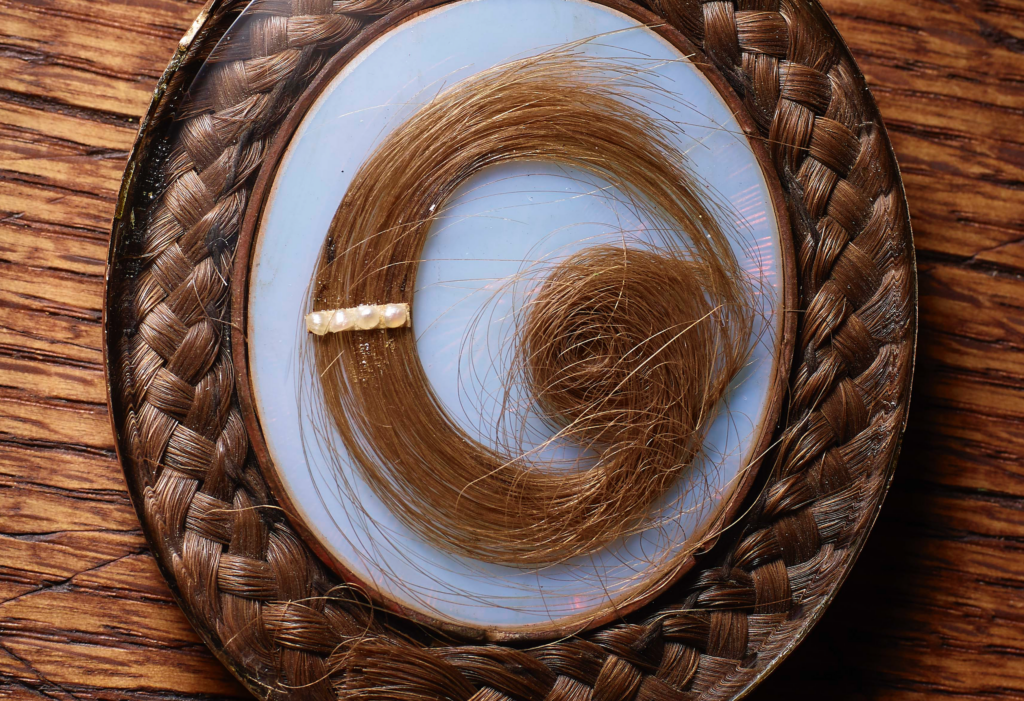
How William helped the Catholic Church before Elizabeth
When John Carroll was named the first bishop of the United States in 1789, British and French interference with American shipping made communication with Rome difficult. Merchant Filippo Filicchi, who admired Bishop Carroll and wished to help, sent his younger brother Antonio to talk over the problem with Father John Thorpe, the agent in Rome for the American Church. Accompanying Antonio was William Seton. Seton, an Episcopalian, offered the services of his father’s shipping firm to channel Church correspondence to Baltimore safely. So, it was arranged that communications from Rome would be sent to Bishop Carroll through the Filicchi firm in Italy and the Seton and Maitland firm in New York.
After William died in Italy, the Filicchis took Elizabeth in and introduced her to the Catholic faith.
Elizabeth says goodbye
Here’s how Elizabeth recounted her last visit to William’s grave before she returned to the United States to face an uncertain future. “I cried there for a long time in the fullness of my soul with a feeling of inexpressible tenderness, united the remembrance of his last sufferings to the memory of our past and the happy years we spent together. It seemed that I loved him more than anyone could love on earth.”
